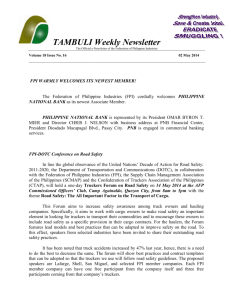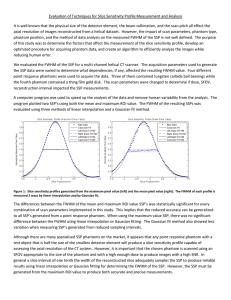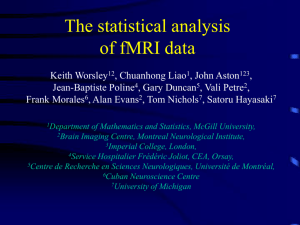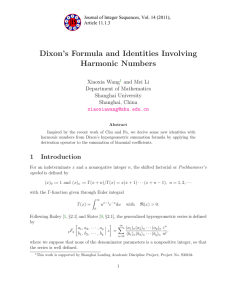ALTITUDE VARIATION OF THE OII 7320 Å SPETRAL LINE WIDTH
advertisement
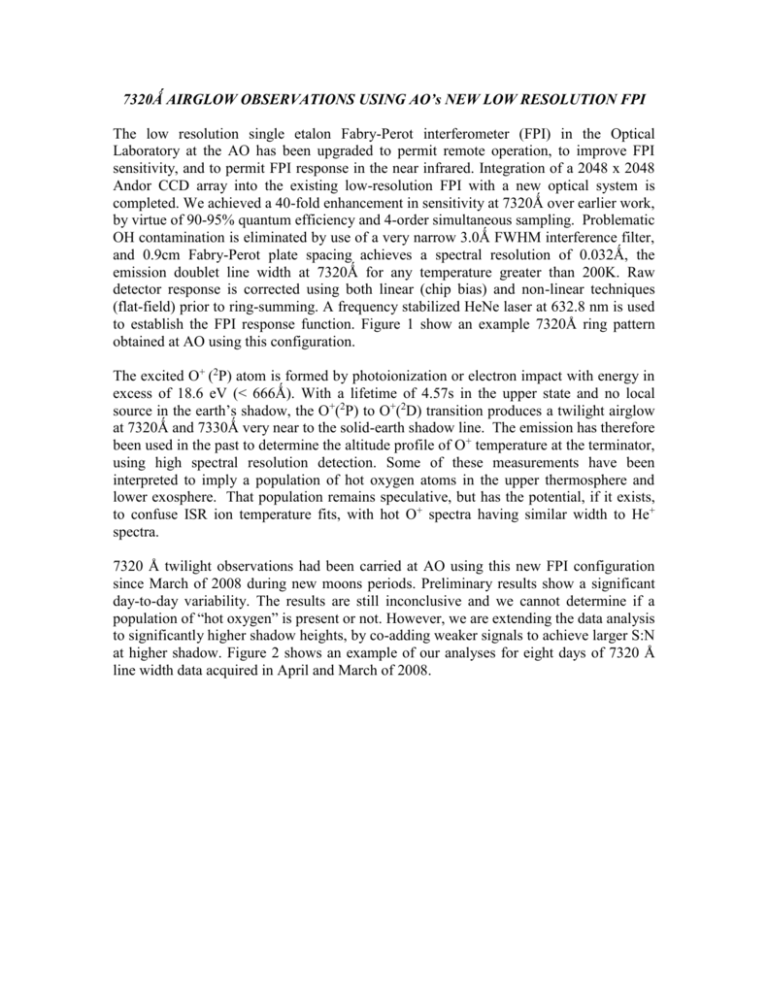
7320Ǻ AIRGLOW OBSERVATIONS USING AO’s NEW LOW RESOLUTION FPI The low resolution single etalon Fabry-Perot interferometer (FPI) in the Optical Laboratory at the AO has been upgraded to permit remote operation, to improve FPI sensitivity, and to permit FPI response in the near infrared. Integration of a 2048 x 2048 Andor CCD array into the existing low-resolution FPI with a new optical system is completed. We achieved a 40-fold enhancement in sensitivity at 7320Ǻ over earlier work, by virtue of 90-95% quantum efficiency and 4-order simultaneous sampling. Problematic OH contamination is eliminated by use of a very narrow 3.0Ǻ FWHM interference filter, and 0.9cm Fabry-Perot plate spacing achieves a spectral resolution of 0.032Ǻ, the emission doublet line width at 7320Ǻ for any temperature greater than 200K. Raw detector response is corrected using both linear (chip bias) and non-linear techniques (flat-field) prior to ring-summing. A frequency stabilized HeNe laser at 632.8 nm is used to establish the FPI response function. Figure 1 show an example 7320Å ring pattern obtained at AO using this configuration. The excited O+ (2P) atom is formed by photoionization or electron impact with energy in excess of 18.6 eV (< 666Ǻ). With a lifetime of 4.57s in the upper state and no local source in the earth’s shadow, the O+(2P) to O+(2D) transition produces a twilight airglow at 7320Ǻ and 7330Ǻ very near to the solid-earth shadow line. The emission has therefore been used in the past to determine the altitude profile of O+ temperature at the terminator, using high spectral resolution detection. Some of these measurements have been interpreted to imply a population of hot oxygen atoms in the upper thermosphere and lower exosphere. That population remains speculative, but has the potential, if it exists, to confuse ISR ion temperature fits, with hot O+ spectra having similar width to He+ spectra. 7320 Å twilight observations had been carried at AO using this new FPI configuration since March of 2008 during new moons periods. Preliminary results show a significant day-to-day variability. The results are still inconclusive and we cannot determine if a population of “hot oxygen” is present or not. However, we are extending the data analysis to significantly higher shadow heights, by co-adding weaker signals to achieve larger S:N at higher shadow. Figure 2 shows an example of our analyses for eight days of 7320 Å line width data acquired in April and March of 2008. Figure 1- 7320 Å ring pattern obtained at April 9, 2008 with an integration period of 60s. 0.15 0.15 0.14 0.14 FWHM FWHM April 2008 - 4 days 77 Images 0.13 0.12 0.13 0.12 0.11 0.11 0.1 0.1 18.6 18.7 18.8 5.65 18.9 5.75 0.15 0.15 0.14 0.14 FWHM FWHM 5.85 LOCAL TIME LOCAL TIME 0.13 0.12 0.13 0.12 0.11 0.11 0.1 0.1 2 6 10 100 14 80 60 40 20 SHADOW ALTITUDE (km) SHADOW ALTITUDE (km) 0.15 0.15 0.14 0.14 FWHM FWHM May 2008 - 4 days 175 Images 0.13 0.12 0.13 0.12 0.11 0.11 0.1 0.1 18.6 18.7 18.8 18.9 5.2 19 5.6 0.15 0.15 0.14 0.14 FWHM FWHM 6 6.4 LOCAL TIME LOCAL TIME 0.13 0.12 0.13 0.12 0.11 0.11 0.1 0.1 -5 0 5 10 SHADOW ALTITUDE (km) 150 100 50 0 -50 -100 SHADOW ALTITUDE (km) Figure 2- FWHM general variability of 7320 Å spectral line at Arecibo for April and May, 2008. The red line is the polynomial fit for the data points.








